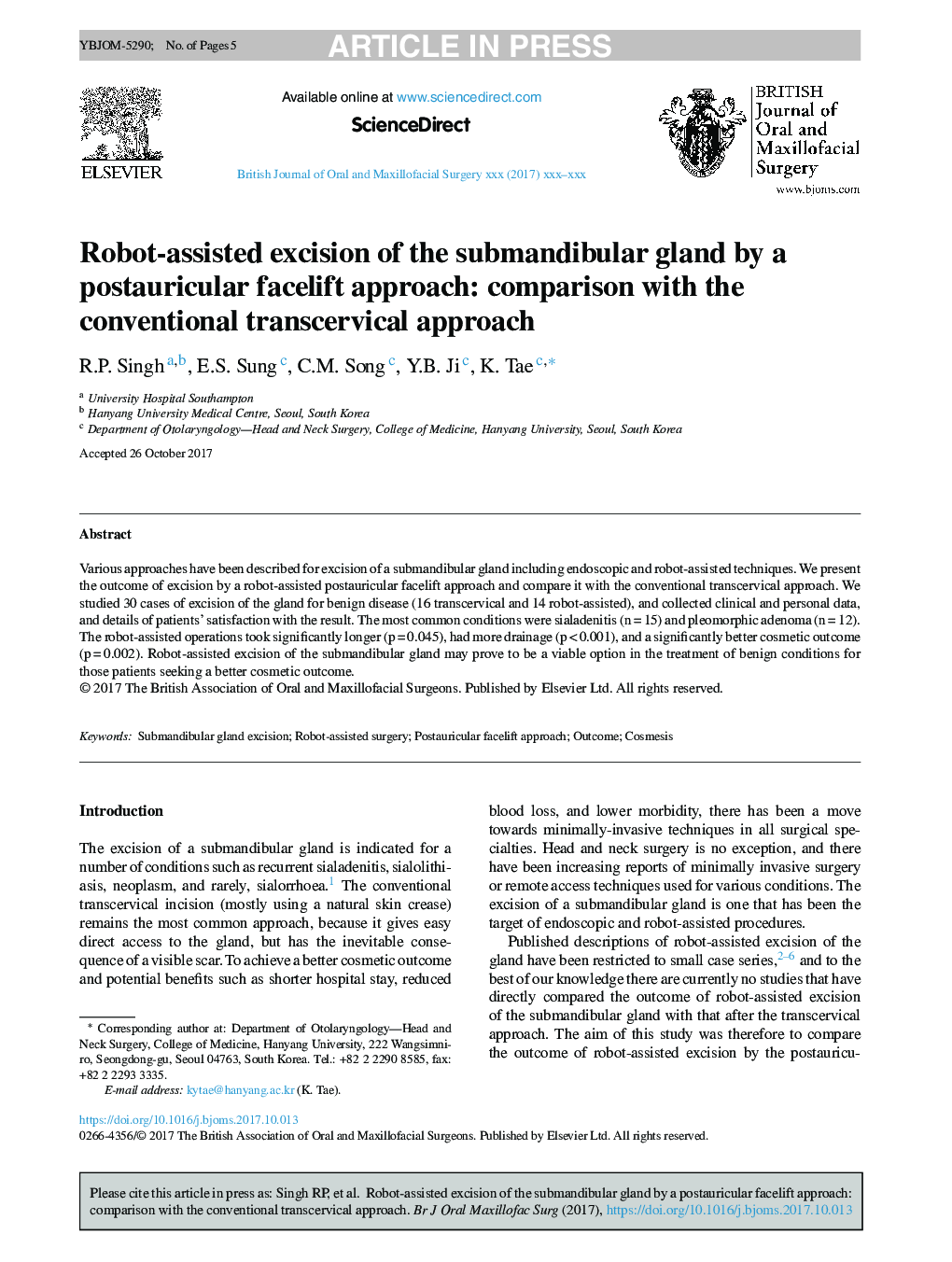| Article ID | Journal | Published Year | Pages | File Type |
|---|---|---|---|---|
| 8696849 | British Journal of Oral and Maxillofacial Surgery | 2017 | 5 Pages |
Abstract
Various approaches have been described for excision of a submandibular gland including endoscopic and robot-assisted techniques. We present the outcome of excision by a robot-assisted postauricular facelift approach and compare it with the conventional transcervical approach. We studied 30 cases of excision of the gland for benign disease (16 transcervical and 14 robot-assisted), and collected clinical and personal data, and details of patients' satisfaction with the result. The most common conditions were sialadenitis (n = 15) and pleomorphic adenoma (n = 12). The robot-assisted operations took significantly longer (p = 0.045), had more drainage (p < 0.001), and a significantly better cosmetic outcome (p = 0.002). Robot-assisted excision of the submandibular gland may prove to be a viable option in the treatment of benign conditions for those patients seeking a better cosmetic outcome.
Related Topics
Health Sciences
Medicine and Dentistry
Dentistry, Oral Surgery and Medicine
Authors
R.P. Singh, E.S. Sung, C.M. Song, Y.B. Ji, K. Tae,
